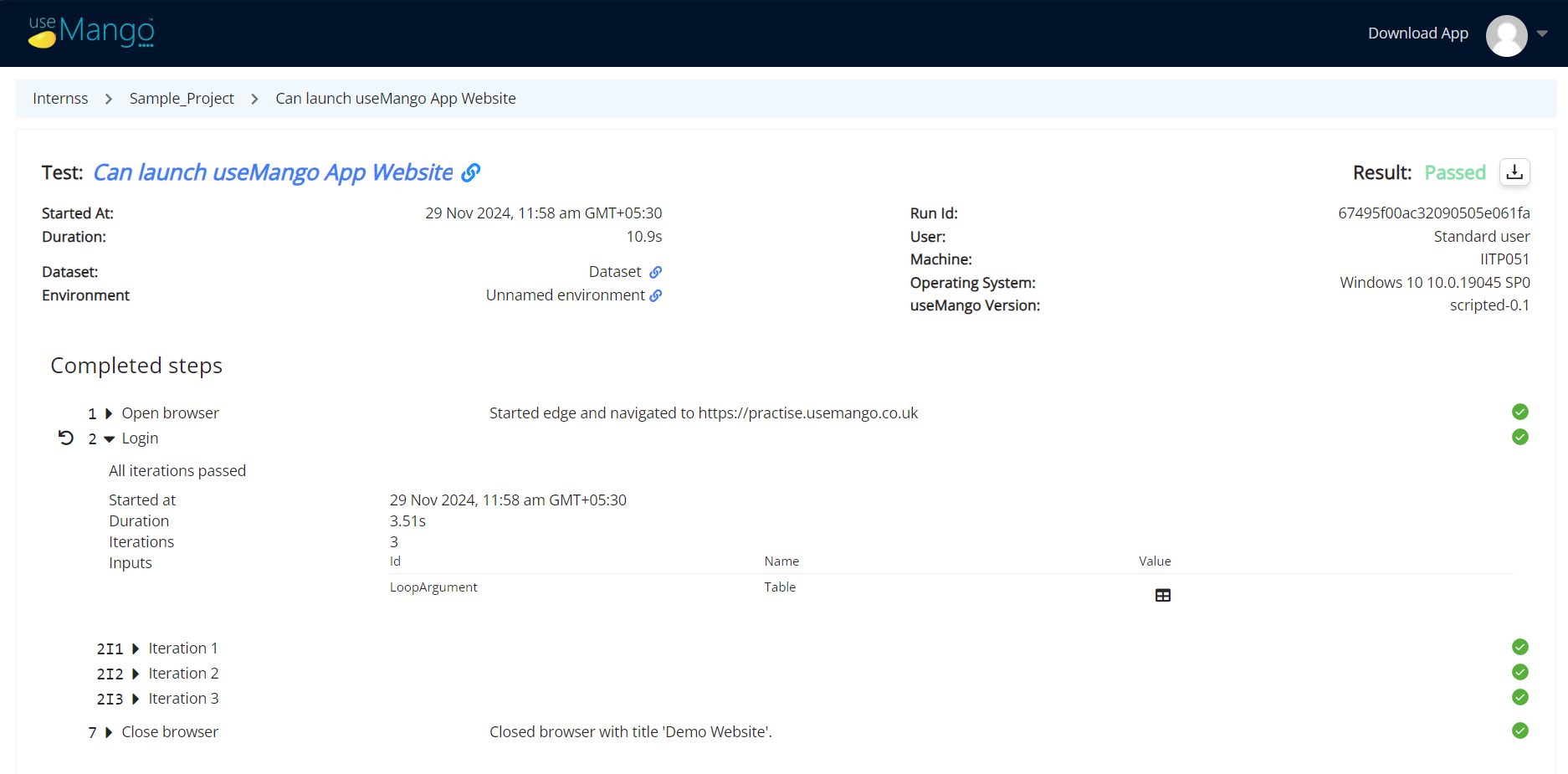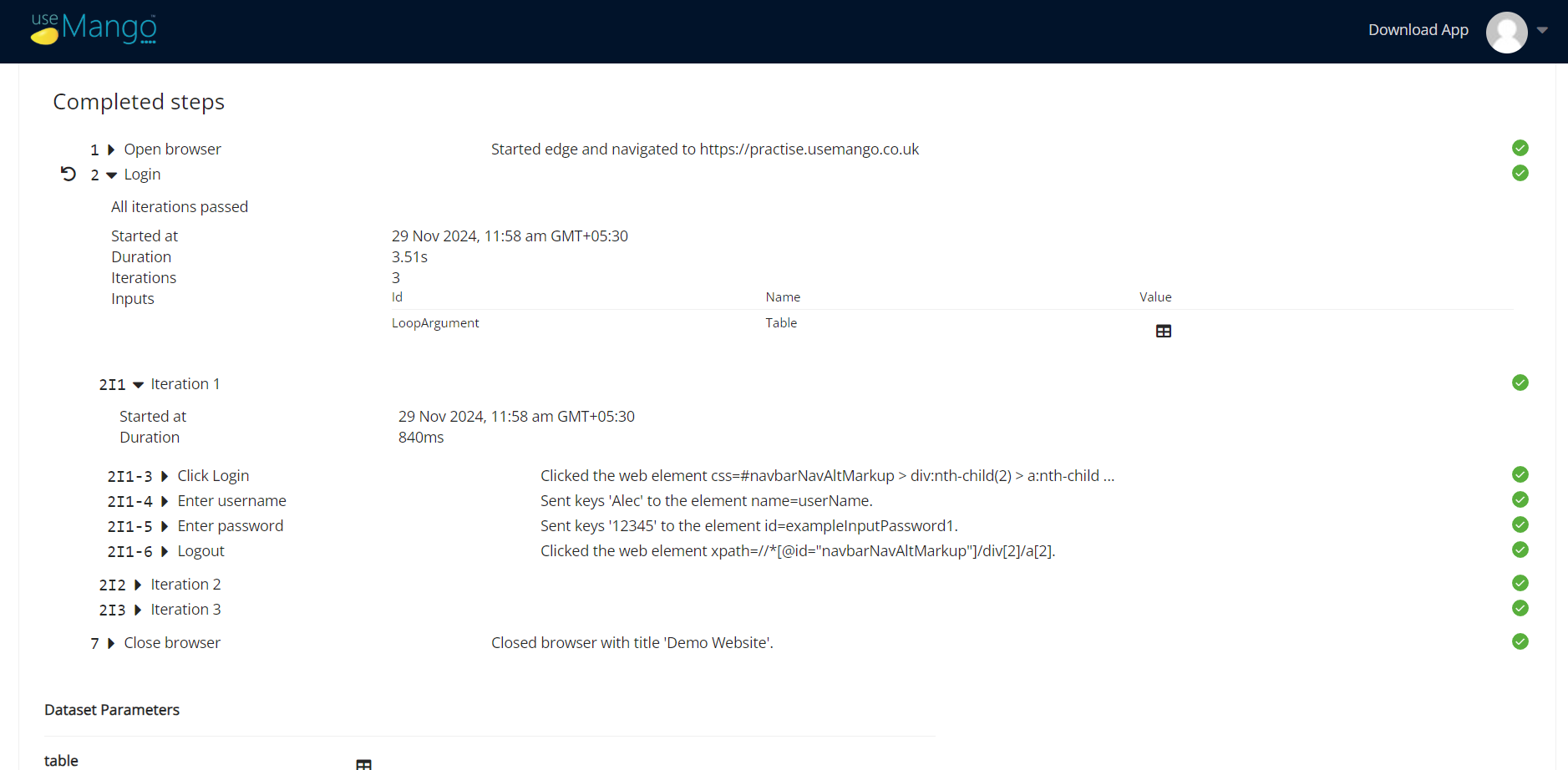Step Numbering In Reports
In useMango, each step of a test execution is assigned a specific number to provide clarity and structure to the testing process. This numbering helps track and identify the sequence of actions within the test, particularly for those tests with multiple iterations or actions.
Step Numbering of Steps
Each step in the test is numbered sequentially based on the order of execution. For example:
- Open browser
- Login

When you click the dropdown for any step, you can see additional details like the identifiers used (e.g., element locators), the time taken for execution, the values assigned (e.g., username, password), the step name, and log messages, which offer further insights into the step’s execution.

Step Numbering for Loop Steps
When a test involves a loop, the numbering format adapts to reflect the loop structure. A loop icon will appear next to the step number to indicate it’s part of a loop.
Loop Step Numbering
The loop step is numbered based on its position in the test.
For example: 2: Login (indicates the loop is the secound step in test)

Inside the loop, each iteration is numbered with the letter I indicating “iteration,” followed by the iteration number. For example, 2I1 represents:
2: The loop step number (Login).
I: Indicates it’s part of an iteration.
1: The first iteration of the loop.
Step Numbering Within Iterations
Steps executed within each iteration are numbered based on their position in the overall test sequence.

2I1-3: This means the third step in the test sequence was executed during the first iteration of loop step 2 (Login). Here:
2: The loop step number.
I: Indicates it’s part of an iteration.
1: The iteration number.
3: The step’s position in the overall test sequence.
Viewing Iteration Details
By clicking on the dropdown for a loop step, you can view all its iterations. Each iteration will show the steps executed within it, along with their details.